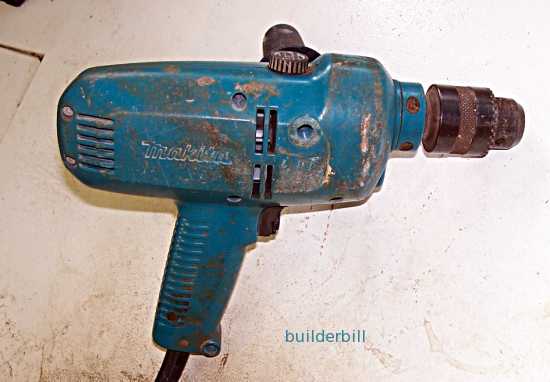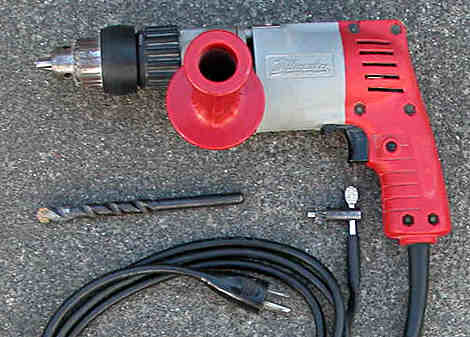 |
||||||||
Graphical Construction Glossary >> Woodwork. >> Power Tools >> Percussion Drill
The 12mm Makita drill in the photo is a top end example of these drills. The main distinction of these drills is that they are dual purpose. They can be used with a hammer action for drilling masonry and when the hammer feature is not on then it can be used as a normal drill for timber, steel and plastics etc. Don't confuse these drills with the ones that a generically called hammer drills or rotary hammer drills. They are specific tools for just drilling masonry and they use special bit fittings. Percussion drills are "either or" drills that use a standard three jaw chuck with plain round drill bits. I say that the one above is a top end model, because it has the advantage of four separate drill speeds. Two of them though the gearbox and a high and low electrical switch, giving it a good range of speeds for different work. So for a large bit through steel may use the slowest speed whereas small bits, standard or masonry will use a high speed. This drill has seen a lot of work using standard masonry bits at the highest speed setting. It mainly drills up to 8mm holes for plastic plug an screw fixing or small expanding type bolts and fasteners. When the hole size and depth increases then this is not the best tool to use. The bits start to slip and it is time for a larger, masonry only drill.
The photo here shows a generic type of drill and a masonry bit. The bits look just about the same as a standard twist drill but the tip has tungsten inserts.
Here is a photo of a masonry bit giving a better view of the tungsten carbide tip. This type of bit is known as a Reduced Shank Bit. The shank being the end that goes into the drill chuck. The reason for this is so that a small drill, say with a 1/4" chuck can still drill a 1/2" hole. It is not recommended to put a small drill to drilling larger holes than it is designed to do on a long term basis, but quite OK for the odd job. If you didn't find exactly what you are looking for try this search tool that will search the site and the web. "What can be added to the happiness of a man who is in health, out of debt, and has a clear conscience? "When we build, let us think that we build for ever."John Ruskin 1819-1900 |
Hire Equipment  Furniture Fittings - Architectural Hardware - Electronic Locking Systems - Technical Hardware BuilderBill sponsorship Glossary Pages.Roof Glossary and Roofing Formwork Glossary and other tempory work. Hand Tools Glossary Power Tools Glossary Asbestos Glossary Woodwork Glossary Stair Glossary Concrete Glossary Masonry Glossary doors Glossary BuilderBill Books Building Maths  Stair Design  Asbestos Book |
|||||||
|
|
||||||||
|
Please Note! The information on this site is offered as a guide only! When we are talking about areas where building regulations or safety regulations could exist,the information here could be wrong for your area. It could be out of date! Regulations breed faster than rabbits! You must check your own local conditions. Copyright © Bill Bradley 2007-2012. All rights reserved. |
||||||||


